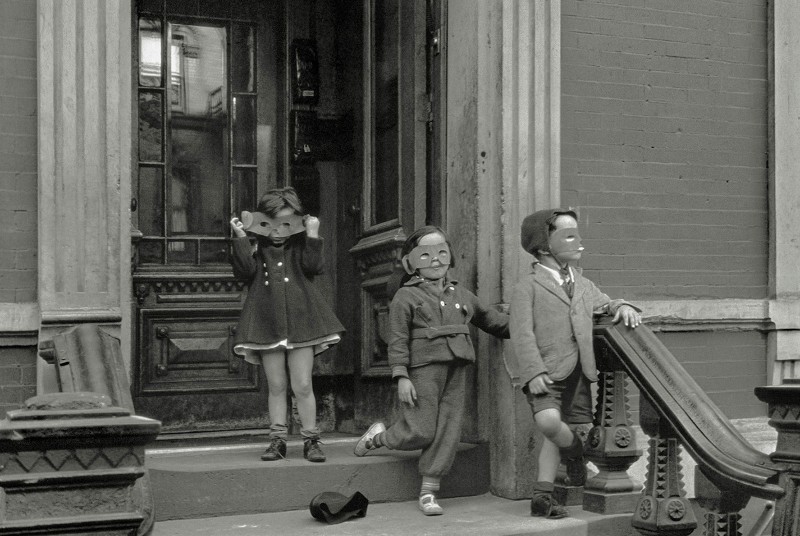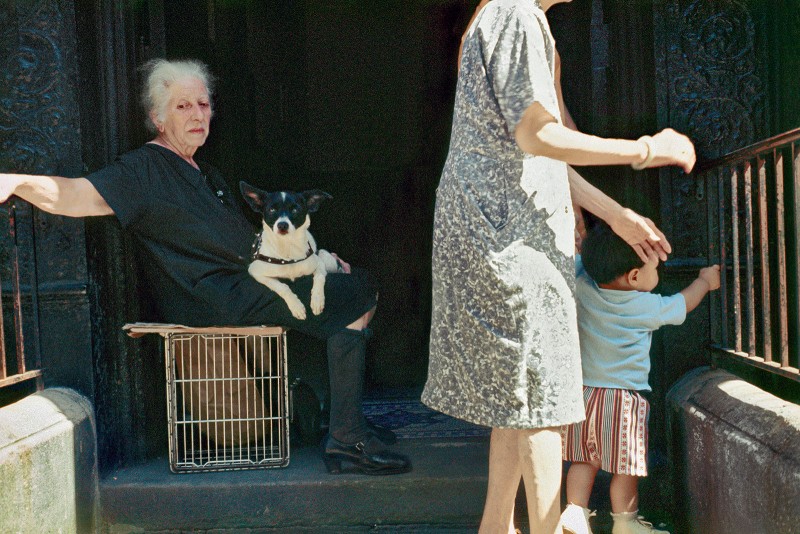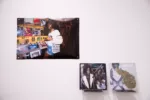“You don’t take a photograph, you make it.” – Ansel Adams
To say that Helen Levitt, one of the 20th century’s most celebrated female photographers, fabricated any of her candid and spontaneous snapshots of New York City living may seem at first counterintuitive. Critics and art historians credit Levitt, an American, with spearheading the contemporary street photography movement, citing her deft use of a Leica camera and a right-angle viewfinder to take novel and unobtrusive photos of the drama, joy, and ambivalence of everyday life. But her sharp eye and quick fingers are only half of the equation. Adams’s quote hints at it, but Levitt’s photography proclaims it: a photograph is made when its creator’s presence permeates the work. And to view a Helen Levitt photo is to know Helen Levitt.
It started with chalk

Helen Levitt’s career began in the late 1930s. She became fascinated with the curious chalk graffiti of children’s street culture, teaching herself photography to document the crude drawings and the doodling artists who drew them. She became friends and colleagues with renowned photographers Walker Evans and Henri Cartier-Bresson, and was included in the Museum of Modern Art’s inaugural photography exhibition in 1939. By 1943, Levitt’s first solo show was curated by famed photography critic Nancy Newhall. Levitt’s work saw a renewal of interest during the second wave feminist movement of the 1960s and ’70s, and she began limited work in color photography at this time. Levitt passed away in 2009 at the age of 96.
A small collection of Levitt’s perspicuous work is available to view at the Everson Museum of Art, in Syracuse, New York. A stop in a traveling show, Helen Levitt: In the Street, will remain at the Everson until May 8. The show comprises 39 photos, 10 of which are in color. The vast majority of them feature New York subjects, but there are a few from Levitt’s rare excursions outside, namely her trips to Mexico and New Hampshire.
Arranged on crisp white walls at eye level, Levitt’s photography flows easily from one subject to the next. Other than an intuitive grouping of non-New York subjects together, there is no discernible curatorial theme to how the photos are arranged. A few of the color photos are grouped together on the far end of the gallery, next to a wall text describing Levitt’s use of color. Levitt’s achievements in film command a limited amount of wall space—not more than a small wall text and a desolate photo of a broken television set. According to biographer Maria Hambourg, Levitt cared little for her film work, and yet it should be noted that this esteemed photographer was also an Academy Award-nominated screenwriter (her documentary film “The Quiet One,” in collaboration with James Agee, was nominated for Best Documentary Feature in 1949). Overall, the arrangement of the photographs feels just as extemporaneous as Levitt’s process—something that may be a weakness in another show, but for a Helen Levitt exhibition, this mimicry only serves to further celebrate Levitt’s talent.

Levitt’s work typifies the inner world of a person utterly and easily delighted with life—the lives of others, of objects, of despondent and celebratory moments. Her photographs portray a sensitive and honest world unclouded by the politics or social mores of her time. Her photos of the Lower East Side and Spanish Harlem, considered then to be seedier parts of the city, impart a humanity to her subjects that was not necessarily the first thing people of more genteel neighborhoods saw. Children delighted Levitt and her snapshots of their exuberant and improvised play have become her most famous works, several of which are showcased in In the Street. She presents a vision of New York that is at once idiosyncratic and ageless—mothers chatting on stoops; children cooling themselves in the spray of an opened fire hydrant; water-ice vendors working the streets; and men in suits walking the sidewalk, eyes cast downward.
2009 was a fateful year for female street photographers. It marked not only the death of Helen Levitt, but also Vivian Maier. Maier was a prolific and gifted photographer, but printed next to nothing of her work—it was discovered posthumously at auction. She photographed mainly in New York and Chicago and even experimented a bit with film, like Levitt. Maier’s emergence as an Emily Dickinson-type figure in the street photography movement speaks to the mystery of the artistic personality and the limited presence of women in the wider world of fine arts. Had she dared or cared to emerge from obscurity, how would the field of photography been shaped by these two women’s influence? What about the acceptance and celebration of women’s contributions in fine arts, in general? These questions are unanswerable. But the inclusion of Maier in the pantheon of photographer greats, with Levitt, speaks to contemporary society’s broadened horizons and deepened appreciation for women artists.
Helen Levitt: In the Street is on view until May 8, 2016 at Emerson Museum of Art, Syracuse, NY.








